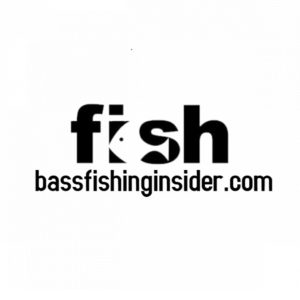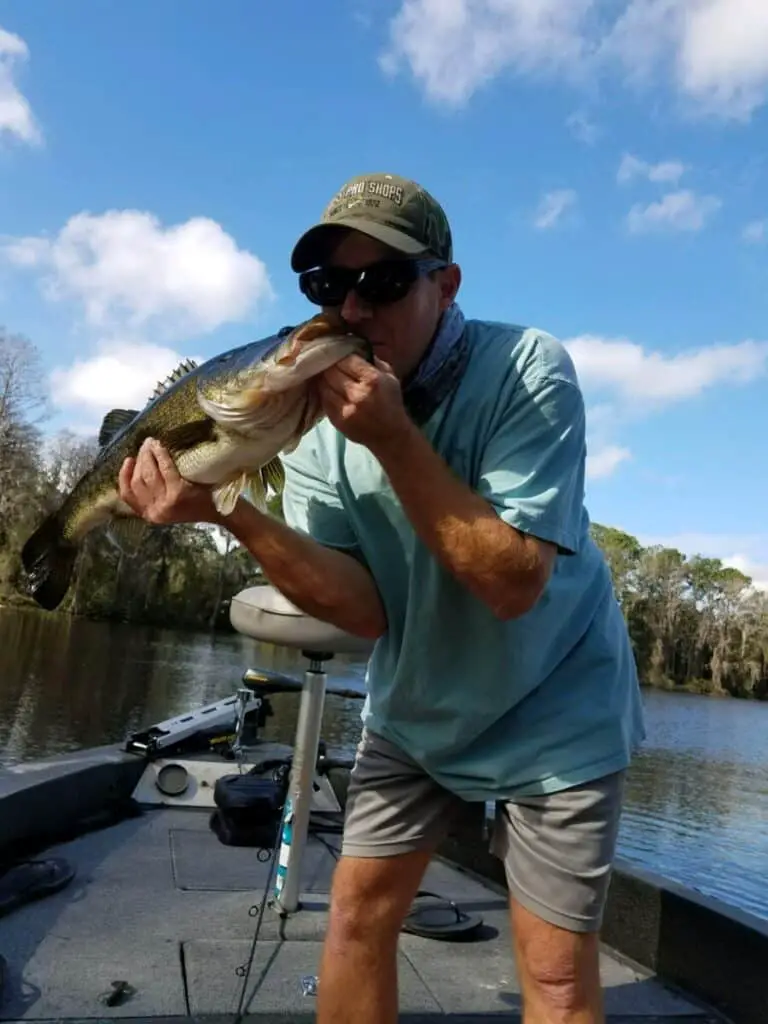
There’s nothing in bass fishing like a violent topwater strike, especially when it comes out of nowhere. But most anglers miss the simple tricks that trigger those blowups more often.
Welcome to the exciting world of topwater bass fishing! You’ve come to the right place if you’re a passionate angler seeking adrenaline-pumping action and heart-stopping strikes.
This guide will provide insider topwater fishing tips and techniques you can’t afford to miss. Whether you’re a novice looking to dive into this thrilling style of fishing or a seasoned angler looking to refine your skills, we’ve got you covered. Get ready to discover the secrets of topwater bass fishing and elevate your angling experience to new heights!
The best tip for how to catch bass on topwater is to choose a lure that matches the hatch for a given situation. Bass feed on specific forage in certain lakes and seasons. By identifying the target prey, you’ll master the secrets to successful topwater bass fishing.
What is Topwater Bass Fishing?
Topwater bass fishing is where lures are floated or skimmed on the surface. This technique targets bass as they’re naturally drawn to disturbances on the surface, interpreting them as potential prey. The lures used often mimic the movements of small animals or insects, prompting the bass to strike.
Unlike other methods where the action mostly happens underwater, in topwater bass fishing, the strikes are visible, often resulting in a spectacular display as the bass breaches the surface to take the lure.
How to Choose the Right Topwater Lure
Topwater lures come in many shapes and sizes, which can be overwhelming when trying to choose the right one. The key is to identify what bait fish are present in the lake or pond, then to match the size, color, and type of lure with the local prey. For example, if bass are feeding on bluegill, opt for a lure that looks like one. If they’re eating crayfish, choose a lure with the right size and color to match the prey.
In topwater bass fishing, another crucial factor is to experiment and try different lures until you find success. As you gain experience, you’ll learn which lure to use in different situations.
Additionally, paying close attention to water conditions, such as clarity and temperature, is another important consideration influencing the bass’s feeding behavior. Start with popular choices like buzzbaits, poppers, or frog imitations and observe how bass react to each presentation. By staying adaptable, you’ll maximize your chances of landing fish.
When to Use Topwater for Bass Fishing
Topwater bass fishing is an exciting technique that can yield excellent results when timed right. Topwater lures are most effective during specific times of day, certain times of the year, and conditions:
Dawn and Dusk
Bass are typically more active near the surface during early morning and late afternoon. Several factors influence this behavior. In the early morning, cooler temperatures and subdued light levels make the surface more attractive to bass. The cooler water temperature allows them to actively feed and hunt, while the low-light conditions make it easier for them to spot prey near the surface. Similarly, warming water and declining sunlight during the late afternoon prompt baitfish to move toward the surface, attracting bass.
If you’re chasing topwater blowups at dawn, timing and gear matter more than most anglers realize. We broke down exactly what to throw in those low-light windows, check out our guide to early morning bass fishing essentials for more details.
Overcast Conditions
Cloudy or overcast days can also bring bass closer to the surface, making topwater lures a good choice. Cloudy or overcast days can bring bass closer to the surface, making topwater lures a good choice. The diffused light and cooler temperatures create favorable conditions for bass to venture toward the top of the water column in search of prey. Topwater lures mimic surface-dwelling prey and can attract bass and trigger aggressive strikes. For more info on low light conditions, heck out tip number seven in 49 Bass Fishing Tips that Always Seem to Work.
Spawning Season
The spawning season can provoke bass into being more aggressive, making them more likely to strike at surface lures. During the spawning season, bass can exhibit heightened aggression, which makes them more susceptible to striking at surface lures.
As bass prepare to spawn, their territorial instincts intensify, driving them to protect their beds from perceived threats. This increased aggression often creates a heightened willingness to strike at lures that invade their territory, such as topwater offerings. Anglers can take advantage of this behavior by presenting surface lures that mimic vulnerable or intruding prey, triggering aggressive responses from bass (source).
Schooling Fish
In our post, How to Catch Schooling Bass, we specifically mention the efficacy of topwater lures when targeting schooling fish. The commotion and surface disturbance created by these lures mimic the behavior of baitfish in distress, triggering a feeding response from the entire school of fish.
As the lure dances and skitters across the water’s surface, it entices multiple fish to compete for the easy meal, often resulting in intense strikes and exciting fishing action. The ability of topwater lures to cover a larger area and create a visible presence on the water’s surface makes them an excellent choice for enticing and catching schooling fish.

Ideal Water Temperature
The optimal water temperature for topwater bass fishing ranges between 51 and 89 degrees Fahrenheit. Bass are most active in this range and are more likely to hit topwater lures. According to the Oklahoma Department of Wildlife Conservation, late Spring, Summer, and Fall are some of the best times of year for a topwater bite.
The 9 Best Topwater Lures for Catching Monster Bass
Different topwater lures can yield different results, and it’s essential to have a variety in your tackle box. Some of the most effective include poppers, buzzbaits, frogs, and stick baits. These lures mimic different prey animals and can be used in varying conditions. Always consider the time of day, water conditions, and the type of cover present when selecting your lure.
A variety of topwater lures in your tackle box is a game-changer for catching monster bass. Each lure offers unique advantages, imitating different types of prey and working best under various conditions.
It’s critical to choose the right lure based on the time of day, water conditions, and the type of cover in the area. Here’s our list of the top nine lures for topwater bass fishing:
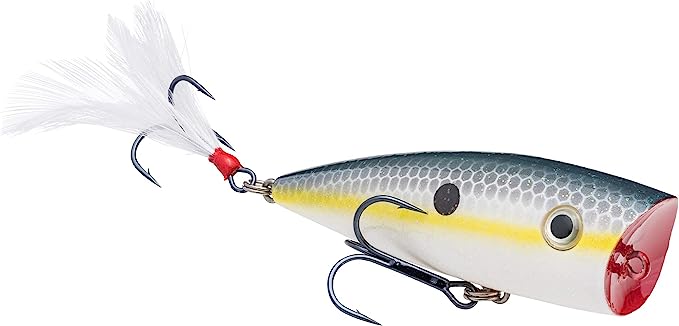 Poppers: Poppers are topwater lures that create a popping or splashing sound when retrieved. They feature a concave face that displaces water and creates commotion, imitating a wounded or struggling baitfish. Poppers are effective for bass fishing in calm or slightly choppy water conditions. One of my all-time favorite poppers is Strike King’s Splash Hardbait Series Bait (Amazon). It consistently puts fish in the boat and seems to outlast some of the other poppers on the market.
Poppers: Poppers are topwater lures that create a popping or splashing sound when retrieved. They feature a concave face that displaces water and creates commotion, imitating a wounded or struggling baitfish. Poppers are effective for bass fishing in calm or slightly choppy water conditions. One of my all-time favorite poppers is Strike King’s Splash Hardbait Series Bait (Amazon). It consistently puts fish in the boat and seems to outlast some of the other poppers on the market.
- Buzzbait: Buzzbaits are surface lures with a rotating propeller or blade attached to a wire arm. When retrieved, the blade creates a buzzing noise and surface disturbance, mimicking a fleeing baitfish or insect. Buzzbaits excel in low light or murky water conditions, attracting aggressive bass with their vibration and flash.
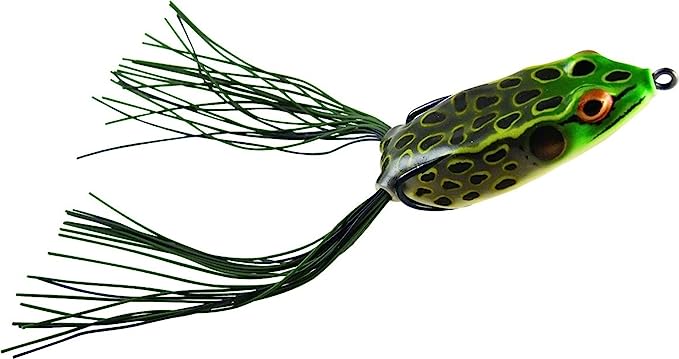 Hollow Body Frog: Hollow body frogs are soft plastic lures that resemble frogs. They have hollow cavities and weedless hooks, allowing them to be fished in heavy cover and vegetation. When worked across lily pads or other surface vegetation, hollow-body frogs create lifelike swimming that entices bass to strike. The Booyah brand is a staple for many frog fishing aficionados.
Hollow Body Frog: Hollow body frogs are soft plastic lures that resemble frogs. They have hollow cavities and weedless hooks, allowing them to be fished in heavy cover and vegetation. When worked across lily pads or other surface vegetation, hollow-body frogs create lifelike swimming that entices bass to strike. The Booyah brand is a staple for many frog fishing aficionados.
- Whopper Ploppers: Whopper Ploppers are unique topwater lures featuring a propeller on the tail end that spins and churns water when retrieved. The propeller creates a loud, fish-attracting sound and surface disturbance that imitates a small struggling baitfish. Whopper Ploppers are effective for covering large areas of water and triggering aggressive strikes.
- Prop Baits: Prop baits are surface lures with one or more propellers that rotate and create a sputtering or chugging action. The propellers throw water and make noise, imitating a baitfish in distress. Prop baits are excellent choices for calm or slightly choppy water conditions, and their unique action often triggers feeding-motivated bites. The Devil’s Horse has been around for as long as I can remember and continues to prove itself worthy.
- Chuggers: Chuggers have a concave face that creates a deep, blooping sound and splash when jerked or popped on the surface. The popping action imitates a baitfish feeding or fleeing and can attract bass from a distance. Chuggers work well in calm to moderately choppy water conditions.
- Pencil Poppers: Pencil poppers are long, slender topwater lures with a tapered nose and a weighted tail. When retrieved with a steady, rhythmic motion, they create a popping or splashing sound that imitates a baitfish on the surface. Pencil poppers are suitable for calm to moderately choppy water conditions and are especially effective when bass are feeding on smaller baitfish near the surface.
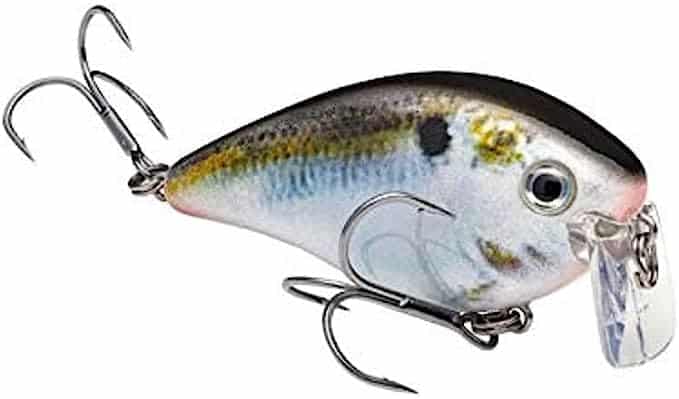 Wakebaits: Wakebaits are topwater lures designed to imitate a baitfish swimming just below the water’s surface or on top of it (in distress), leaving a visible wake or trail behind them. They have a buoyant body and a lip or keel that causes them to swim shallowly. Wakebaits excel in calm water conditions and can entice bass to feed near the surface.
Wakebaits: Wakebaits are topwater lures designed to imitate a baitfish swimming just below the water’s surface or on top of it (in distress), leaving a visible wake or trail behind them. They have a buoyant body and a lip or keel that causes them to swim shallowly. Wakebaits excel in calm water conditions and can entice bass to feed near the surface.
- Walking Bait: Walking baits, also known as “walk-the-dog” lures, have a slim, cigar-shaped body and a distinctive side-to-side walking action when retrieved properly. Anglers achieve this action by twitching the rod tip, causing the lure to dart back and forth. The walking bait mimics a wounded or fleeing baitfish and is effective in various situations and conditions.
Topwater Bass Fishing Tips: Best Techniques
Topwater bass fishing requires practice and a keen understanding of bass behavior. Working your lure correctly is crucial – varying the retrieval speed and pattern, knowing when to pause, and how and when to twitch, pause, or jerk can significantly improve your success rate.
- Walking the Dog: This is a classic technique used primarily with walking baits. The lure is made to move from side to side on the surface, mimicking an injured fish. This method requires a rhythmic twitching of the rod tip while reeling in slack line.
- Popping: Poppers can be worked slowly with a pause or quickly across the top of the water. Varying your retrieve is one of the best ways to determine what fish want on a particular day. Try different cadences to determine what’s most likely to get a bite at a given time.
- Chugging: This technique is used with chugger-style lures and involves a hard twitch of the rod that makes the lure dive briefly below the surface and create a large splash or “chug.”, which can be effective at attracting fish from a distance.
- Buzzing: This style is used with buzzbaits and involves a constant retrieval of the lure. The speed can be varied, but the aim is to keep the blade “buzzing” on the surface, creating a disturbance that attracts predatory fish.
- Skipping: This method is particularly effective with frog lures. The lure is skipped across the surface, like skipping a stone, mimicking a fleeing frog or mouse. This technique works well in heavy cover areas where bass are hiding.
- Splashing and Twitching: This style is often used with propeller lures, frogs, and poppers. The lure is twitched and then allowed to sit, creating a splash and attracting attention before being twitched again.
- Steady Retrieve: The Whopper Plopper and some prop lures are designed for a steady retrieve. They create their action on a straight retrieve, often attracting aggressive strikes.
Remember, the key to successful topwater fishing is to mimic the natural movements of the prey species in your particular body of water. Don’t be afraid to experiment with different lures and techniques until you find what works best.
7 Places to Use Topwater Lures for Bass Fishing

- Docks: Bass often seek shelter under docks, especially during hot weather or when looking for shade. Cast topwater lures close to the docks and work them around the edges and pilings for bass hiding in these structures.
- Laydowns: Fallen trees or submerged logs, known as laydowns, provide excellent ambush points for bass. Target the areas around laydowns with topwater lures, as bass tend to position themselves near the cover, ready to strike at passing prey.
- Lilly Pads: Bass love lily pads as they offer shade, cover, and a rich food source. Work the edges of pad lines, gaps, or open pockets to garner attention from bass.
- Weed Beds: Bass often use weed beds as feeding grounds, where they can find insects, baitfish, and other prey. Calling up bass from their hiding spots in weeds is a powerful way to catch large numbers of fish.
- Rock Structures: Bass frequently relate to rock structures such as points, rock piles, or boulders. Rock structures provide cover for small baitfish and can be a great place to target largemouth Bass.
- Points: Points extending into the water provide a natural funneling effect for baitfish and are often prime areas for bass to ambush their prey. Topwater is a great way to cover water and draw attention to a bait built to mimic dying baitfish.
- Riprap Banks: Riprap banks consist of large rocks or boulders lining the shoreline, commonly used to prevent erosion. These areas attract baitfish, crayfish, and other bass forage. Cast topwater lures along the edges of riprap. Casting parallel to the bank is one of the most effective ways to fish this type of cover.
Remember, bass behavior can vary based on factors like time of year, water temperature, and local conditions. Adapting your fishing techniques to match the specific environment you’re fishing in is essential.
Topwater Fishing Mistakes to Avoid
Topwater fishing is a thrilling but complex technique. Even experienced anglers can make mistakes that can cost. Here are some common mistakes and how to avoid them:
- Lack of Patience: Patience is a virtue, especially in topwater fishing. Be patient during lure retrieval, allowing pauses between movements to mimic natural behavior.
- Not Varying Your Retrieval Pattern: Bass can be notoriously picky, and sometimes a slight change in your lure’s action can trigger a strike. If you’re not getting any bites with your current retrieval pattern, try to vary your lure’s speed, action, or direction.
- Setting the Hook Too Soon: This common mistake plagues even the most veteran anglers. When a bass strikes your lure, your first instinct might be to set the hook immediately. However, doing this too soon can result in pulling the lure away before the bass has a chance to get it in its mouth. When you see a strike, wait a second or two before setting the hook to ensure the bass has the lure. I often tell myself to wait until I feel the fish before leaning into the hookset.
- Ignoring Weather and Seasonal Patterns: Weather patterns and seasons significantly impact bass behavior. Not adapting your fishing strategies to these changes can lead to missed opportunities. For instance, overcast weather can extend topwater activity, while hot, sunny days may restrict the topwater bite to early morning and late evening.
- Neglecting to Observe the Water: Observation is crucial to successful topwater fishing. Look for signs of feeding fish, such as birds diving, baitfish activity, or disturbances on the water surface. These signs can indicate where you should cast your lure.
Avoiding these common topwater fishing mistakes can greatly increase your chances of hooking a monster bass. Remember, practice makes perfect, and every experience is a learning opportunity.
How to Land a Monster Bass: The Perfect Topwater Hookset
Landing a monster bass is a thrill that every angler seeks, and the crux of that achievement lies in executing the perfect topwater hookset. The magic begins when the bass strikes, creating a commotion that sends your adrenaline racing. However, this exciting moment can lead to a common mistake – setting the hook too soon. It’s crucial to suppress that immediate instinct to jerk the rod. Instead, wait a second to ensure the bass securely has the lure in its mouth.
Once you’re sure the bass has taken your lure, it’s time to set the hook. Setting the hook with a topwater lure requires a technique different from other bait forms. Instead of snapping the rod, it’s best to “lean” into it by dragging it away from the fish. Too much rod movement can adversely affect the hookset motion.
After the hookset, it’s vital to keep the line taut. Bass are known for their acrobatic leaps and spirited runs, and any slack in the line could provide the chance for the fish to throw the hook and escape. Maintaining tension on the line keeps the hook in place, making it harder for the bass to shake free.
INSIDER TIP: The hookset with a frog is vastly different than most other topwater applications. When frog fishing, wait until you feel pressure from the fish, then sharply snap the rod tip to set the hook.
Topwater Fishing Gear Essentials for a Successful Catch
When it comes to topwater bass fishing, your gear choices can greatly influence your overall success. You need to arm yourself not only with the right lures but also with optimal equipment to complement your topwater fishing techniques. Below are the must-haves:
- Rod: Your rod should offer the perfect blend of stiffness and flexibility – firm enough to facilitate a strong hookset yet sufficiently flexible to absorb the force of powerful surface strikes. Medium to medium-heavy power rods provide this balance. A rod length within the 6.5 to 7.5 feet range typically suits most topwater techniques. Lews makes a rod specifically designed for topwater fishing that fits the bill.
- Reel: A baitcasting reel is often the preferred choice for topwater fishing due to its superior casting control and power. Additionally, the gear ratio of the reel is vital. A high-speed reel with a gear ratio from 7.1:1 to 8.1:1 enables quick line retrieval, helping maintain line tension during the explosive strikes that characterize topwater fishing.
- Line: The type of line used is critical in topwater fishing. Although braided line is praised for its high strength, sensitivity, and minimal stretch, monofilament line is an equally excellent choice, particularly for topwater lures. Unlike fluorocarbon, which sinks faster, monofilament sinks more slowly, allowing it to stay near the surface. This feature complements the topwater lure’s action perfectly. Furthermore, monofilament has more stretch than braided line, which can be beneficial by providing a buffer during a hard strike, reducing the chance of the hook tearing out of the fish’s mouth. However, if you’re fishing in areas with heavy cover, the toughness of braid might offer an advantage. Therefore, your fishing conditions and lure choice should dictate whether to opt for a 30 to 50-pound test braided line or a similar-strength monofilament line. For a complete breakdown of what the best line is for bass fishing, check out this in-depth post.
- Pliers: Quality fishing pliers are invaluable for safely and efficiently removing hooks from your catch or freeing snagged lures. Choose a pair made from rust-resistant material, ideally with an integrated line cutter.
- Net: A sturdy landing net is instrumental in securing your catch, especially when you’re bringing in a monster bass. Opt for a net with a deep bag, wide opening, and long handle for best results.
Harnessing the Power of Topwater Bass Fishing
In conclusion, the art of topwater bass fishing can be truly rewarding when the right tactics are employed at optimal times and conditions. By understanding and mastering the various techniques, selecting the right gear and lures, and tuning in to the best moments for action – such as dawn, dusk, overcast days, and the spawning season – anglers can significantly enhance their catch rates. Moreover, calm water conditions often favor the effectiveness of topwater lures.
Fully embracing these elements can unlock the true potential of this exciting approach to bass fishing. Time to grab your rod, head the water, and get your fish on!
Affiliate Disclosure:
Some of the links in this post may be affiliate links. If you make a purchase through them, we may earn a small commission at no extra cost to you.
